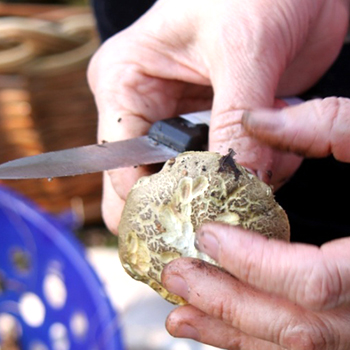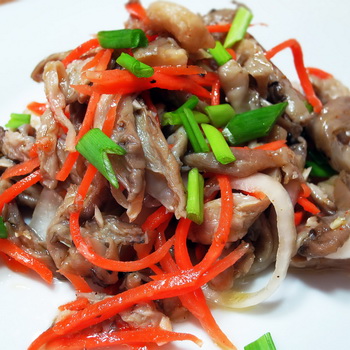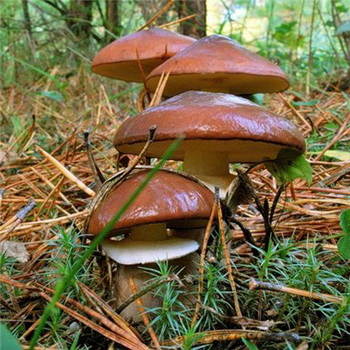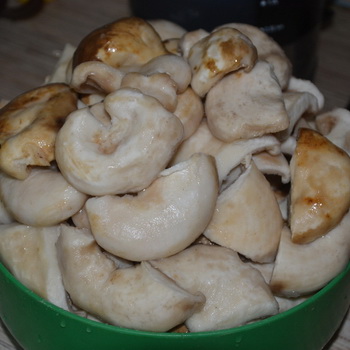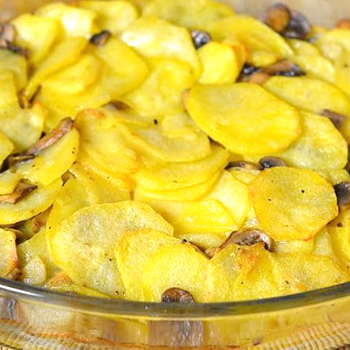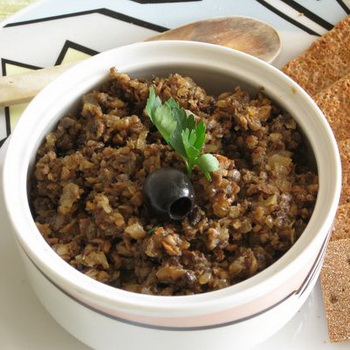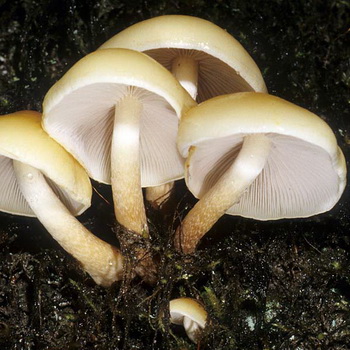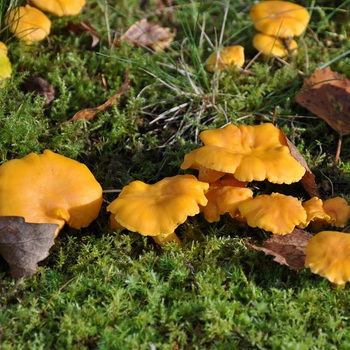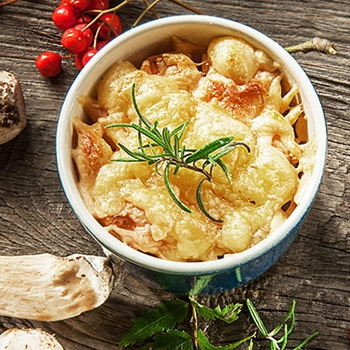Edible tree fungi tinder fungi: photos, videos, names, description of appearance, benefits of fruit bodies, medicinal properties
 Among all the variety of tree fungi, tinder fungi are the most common in the middle lane.
Among all the variety of tree fungi, tinder fungi are the most common in the middle lane.
These fruiting bodies can be found on both living and dead wood. The main harvesting season is from mid-spring to late autumn, sometimes winter varieties are also found.
As a rule, tinder fungi grow in groups, but there are also individual specimens.
Taste qualities vary. But the most important thing that unites different species of tinder fungus is their high healing properties.
What does a birch tinder fungus look like and the beneficial properties of a mushroom

Birch polypores (Piptoporus betulinus) can be observed all year round. In winter, they become harder, but do not change their properties. Young light tinder fungi are suitable for food.
Habitats of birch tinder fungi: in humid forests, on dead wood and dead birch trees.

Season: intensive growth - in May-November, in winter the growth slows down significantly, but the properties of the fungus do not change.
The appearance of the fruiting body of the birch tinder fungus is rounded, the mushroom has a small stem. A distinctive feature of the species is a cushion-shaped or flat-hoof-shaped, rounded, reniform fruiting body, slightly convex from above, with a blunt, rounded edge. The size of the fruiting body is from 3 to 20 cm, there are specimens up to 30 cm in size and 2-6 cm thick.
As you can see in the photo, the surface of the fruiting body of the tinder fungus is even, smooth, covered with a thin, easily peeling film, sometimes there is a cracking skin:



The color of the caps of young mushrooms is whitish or cream, later yellowish, brown. At the junction with the stem, the color of the fruiting body is somewhat darker, with a brown tint.
The hymenophore is tubular up to 10 mm thick, the tubules are white, darken with age. The pores are white, small, rounded or slightly angular, 3-4 of them per 1 mm. Spore white powder.
The stem is either absent, or small, not more than 10% of the length of the fruiting body.
The pulp of a young tinder fungus looks like a white, soft, homogeneous substance, has a pleasant sour smell. In mature specimens, the flesh is tough, crusty.
Variability: The color of the cap ranges from cream-white to brown.
Similar species. The description of the birch tinder fungus is similar to the liverwort mushroom (Fistulina hepatica), which is distinguished by its bright red color.
Young and soft mushrooms of the 4th category are edible, when the color of the cap is still white or creamy, they are boiled and cutlets are made.
Medicinal properties:
- The study of the medicinal properties of the birch tinder fungus in the area of the central nervous system is being carried out.
- Research is underway on the pain relieving properties of these mushrooms.
Next, you can familiarize yourself with a photo, a description of the appearance and medicinal properties of sulfur-yellow tinder fungi:



Description of sulfur-yellow tinder fungus

Sulfur-yellow polypores (Laetiporus sulphureus) - one of the most beautiful mushrooms in the warm season. Then they look like thick bright orange and yellow rose petals. In late autumn, tinder fungi of this species age, fade to a gray-cream color, and are destroyed. In winter, the remains of this fungus are visible on the trees, and the external state depends on what season was before the onset of frost - dry or wet, as well as on the time of growth.

The fact is that the bulk of the sulfur-yellow tinder fungus grows early - in June. However, there is a second and third growth wave until autumn. These autumn waves of mushrooms can remain for the winter. If the frosts are early, then the type of mushrooms may be yellowish. But usually, by the beginning of negative temperatures, they have time to fade, partially collapse, and in this form they can be all winter.
The properties of tinder fungi called sulfur-yellow in winter are significantly inferior to summer specimens. Nevertheless, in case of urgent need for medicinal purposes, they can be used in winter. There is very little information about this in the literature.
Habitat: on rotting oaks, grow in large groups.
Season: May - August, when they are edible, inedible in winter.
Hat. The mushroom looks like a flower with thick and rounded petals.
Pay attention to the photo - a distinctive feature of this type of tinder fungus is the sulfur-yellow and pink-yellow color of the fruit bodies of a pan-shaped or petal shape:



They attach sideways to the tree and grow in tiled or grape-like clusters. The size of the fruiting body is significant - from 3 to 30 cm, and the thickness is from 5 to 20 mm.
In winter, the color and appearance changes dramatically. The mushrooms fade and turn white-gray. The shape also changes, many edges crumble or break.
The tubular layer is finely porous, sulfur-yellow. The spore powder is pale yellow.
Pulp: juicy, pinkish-creamy, with a pleasant taste and smell; in old mushrooms, the tissue becomes rubbery and inedible.
Variability: the color of the fruiting body changes as it ripens from sulfur-yellow to pinkish and pink-red, then the mushrooms fade to gray-white and such remains are visible on oak trees all winter.
Similar species. The sulfur-yellow polypore is similar in appearance and color to the confluent polypore (Albatrellus confluens), which has a lumpy yellowish-orange cap and is distinguished by the presence of a short cylindrical creamy-white stem.
Edibility: soft and juicy young specimens are edible, they can be boiled, fried, canned. In some southern countries, they are considered delicious mushrooms. Hard and old mushrooms are not edible.
Edible, 3rd category (youngest and juicy) and 4th category.
The medicinal properties of the mushroom:
- Tinder fungus sulfur-yellow possesses antibiotic properties against pathogens of various diseases - staphylococci and against harmful bacteria - pullularia.
- This fungus inhibits the growth of many pathogenic bacteria and lowers blood pressure.
- They found dihydrometinolic acid, which is used in research as a substitute for insulin for the treatment of diabetes.
The next section of the article presents a photo, a description of the appearance and medicinal properties of larch tinder fungi:



Larch tinder fungus: properties and description

Larch polypores (Fomitopsis officinalis) in winter and summer they have a similar appearance. They grow faster in summer. They can be harvested at any time of the year, depending on the properties you want to use.

Habitat: on stumps and dead wood of most coniferous and deciduous trees, grow in small groups, or singly.
Season: all year round, perennial.
The fruit body is perennial, thick, 5-15 cm wide, sometimes there are specimens up to 30 cm in size and 3-15 cm thick. A distinctive feature of the species is at first a kidney-shaped, later hoof-shaped, cantilever, fruit body growing sideways. Its appearance is pinkish brown or light brown with concentric patterns or lines. The surface of the fruiting body is rough, often bumpy, covered with a thin, hard, strongly cracking crust. The edges are blunt and rounded.
As shown in the photo, the tubular layer of this edible tinder fungus is finely porous, even, whitish-yellowish or light yellowish:



The spore powder is whitish.
Pulp: thick, corky, later woody, at first whitish, later light yellow, bitter in taste. Over time, the fabric becomes loose and crumbles. The tubules are whitish with a blue tint, later grayish.
Variability: the color of the fruit bodies varies from white-cream to light brown.
Similar species. The larch tinder fungus is similar in shape to the bordered tinder fungus (Fomitopsis officinalis), which is distinguished by a reddish border and a yellow-brown color.
Edibility: inedible, but medicinal.
Useful properties of the larch tinder fungus:
- From tsarist Russia, several thousand poods of larch tinder fungi were annually exported to Europe, which were used for medicinal purposes, as well as as a dye and for brewing.
- There is a legend about the Greek king Mithridates, whom this miracle mushroom saved from poisoning.
- These mushrooms contain agaricic acid, buricolic acid, lanophil polysaccharide, fumaric, ricinolic, citric and malic acids, as well as other organic acids, fatty oil, phytosterol, glucose, and mannitol.
- Another useful property of the tinder fungus is its high antitumor effect.
- Larch polypores are used to treat hepatitis B and C, hepatosis, and fatty degeneration of the liver.
- They are used for complex therapy together with shiitake and reishi for the treatment of pulmonary diseases, including asthma and tuberculosis.
- Agaricin of these mushrooms in small quantities has a sedative and hypnotic effect.
- Mushrooms restore the impaired functions of the liver, the secretion of bile and other enzymes that break down fats.
- The polysaccharide lanophil is isolated from this mushroom, which causes a poorly functioning liver to secrete the necessary enzymes and restore a disturbed metabolism.
- Hemostatic preparations are prepared from the mushroom, used as a laxative, and bruises and asthma are treated with a decoction.
- These mushrooms contain up to 70% resinous physiologically active substances, such as agaricic acid, which is used for tuberculosis.
- They are used to treat jaundice.
See how the larch tinder fungus looks like in the photo, the description of which is presented above:



False tinder: what it looks like and what is useful

Adult specimens of tinder fungus (Phellinus igniarius) have a similar appearance in summer and winter. They grow faster in summer. They can be harvested at any time of the year, depending on the properties you want to use.

Ge grows a mushroom false tinder fungus: on dying trees in mixed forests, more often on the trunks of coniferous trees, they grow in groups or singly.
Season: all year round, perennial.
Fruiting bodies of this perennial polypore look like hemispheres at first, later hoof-like ones, sitting with their lateral side on wood. The size of the fruit bodies is from 5 to 30 cm, the thickness is from 2 to 12 cm. A distinctive feature of the species is a hoof-shaped fruit body with two zones. The upper part consists of an almost black or dark gray crust that cracks over time and on which moss or other plants can grow. The second part has a blackish-brown concentric zone. The edges are thick.
The underside is tubular (tubular hymenophore). The tubules are layered, each year growing from 5 to 6 mm thick. The pores are small, rounded, with solid edges, there are 4-6 pores per 1 mm. The color of the hymenophore is chestnut or rusty brown.
The pulp is corky or woody, firm, dark brown or chestnut brown.
Variability: in the tinder fungus, the false color changes in layers.
Similar species. False tinder can be confused with the old bordered polypore (Fomitopsis pinicola), which differs not in two, but in three zones on the surface, it also has a red concentric zone, similar to a red border.
The benefits of the fungus tinder fungus are evidenced by its high antibiotic properties.
Where and how the bordered tinder fungus grows

Adult specimens of bordered tinder fungus (Fomitopsis pinicola) have a similar appearance in summer and winter. They grow faster in summer. They can be harvested at any time of the year, depending on the properties you want to use.

Habitat: on stumps and dryness of most coniferous and deciduous trees, grows in small groups or singly.
Season: all year round, perennial.
The fruit body is perennial, thick, 5-30 cm wide, sometimes there are specimens up to half a meter in size and 3-15 cm thick.A distinctive feature of the species is at first a kidney-shaped, later hoof-shaped, cantilever, laterally grown fruit body with bright yellowish-white and reddish concentric zones, with a particularly prominent characteristic yellow-white-red stripe along the edge. The upper surface of the fruit bodies is uneven, furrowed-zonal. Young fruiting bodies have the property of separating drops of a colorless liquid, which become viscous and remain on the surface.
The tubular layer of this species of tinder fungus is finely porous, even, whitish-yellowish or creamy-yellowish, sometimes with a pink tint. This layer darkens or turns brown when pressed. The spore powder is whitish.
Pulp: thick, corky, later woody, light yellow at first, later chestnut or brown. The tubules are whitish, later yellowing.
Variability: the color of young fruit bodies is yellowish-reddish or reddish-buffy, then becomes reddish-brown. In old mushrooms, a black bloom, or bark, appears on top.
Similar species. A tinder fungus, bordered at an old age, develops a black bark on top, so it looks like a false tinder fungus (Phellinus igniarius), but is still distinguishable by its characteristic bright yellow-red border near the base.
This type of tinder fungus is inedible, but these mushrooms have medicinal homeopathic properties.
Bordered polypores grow everywhere in the forests of Russia, in all its parts, in contrast to the larch polypore, which has a complex of medicinal properties and is harvested most of all in Siberia. Therefore, it is so interesting for scientists to explore the properties of bordered tinder fungus. This research is ongoing. Currently, preliminary results have been obtained on the effect and possibility of treatment with an extract of tinder fungus, bordered by the central nervous system, reducing pain, relieving stress.
Other species of tinder fungus: May and choppy

Tinder fungus (Polyporus ciliatus).

Gzhe grows rough May tinder fungus: on stumps and deadwood in forests and gardens, grow in small groups or singly.
Season: May - October.
The hat of this type of tinder fungus has a diameter of 3-10 cm, is flat, cream-colored with a felt-like scaly surface, with lighter edges, and a dark stem.
Leg: dense, cylindrical, 3-9 cm high, 4-10 mm thick, sometimes curved, covered with dark scales, gray-brown.
The tubular layer is 4-6 mm wide and contains thin, rounded or angular pores.
Pulp: young mushrooms have white, later creamy, with a pleasant mushroom smell.
Variability: the color of the cap varies from cream to light brown, and in older mushrooms to grayish brown.
Similar species. May tinder fungus in the shape of the cap and the color of the tubes is similar to the changeable tinder fungus (Polyporus drumalis. The main difference between the changeable tinder fungus is the gray-brown cap and the brown-black color of the lower part of the leg.
This variety is inedible as it has a tough flesh.
Polyporus varius.

Where the tinder fungus grows: on stumps and deadwood in forests where there are birches, willows, lindens, alders, they grow in small groups or singly.
Season: June - November.
The cap of this species of tinder fungus has a diameter of 3-12 cm. A distinctive feature of the species is a lingual or almost regular rounded golden-yellow funnel-shaped concave cap with wavy edges and an eccentric brown stem. The wavy edge of the cap is often divided into lobes. The surface of the cap is covered with a thin matte skin, often with fine radial shading.
The leg is short, 0.5-3 cm in height, 7-15 mm in thickness, velvety, eccentric, with time in the lower part it acquires a dark brown or black color. The lower part of the leg is tapered.
The tubular layer (hymenophore) has a white or light cream color, later light brown. Spores are oblong-elliptical, smooth.
The pulp is tough, at first white, later brownish, with a pleasant mushroom smell.
Variability: The color of the cap ranges from leathery yellow to golden yellow, light brown to yellow-brown and almost tobacco.
Similar species. The tinder fungus is changeable in shape, similar to the winter tinder fungus (Polyporus brumalis). The main difference between the winter tinder fungus is a gray-brown cap with a depressed middle and a white-cream tubular layer.
This variety is inedible as it has a tough flesh.
Watch a video about different types of tinder fungi:

